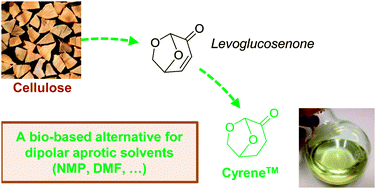Dihydrolevoglucosenone (Cyrene) as a bio-based alternative for dipolar aprotic solvents†
Abstract
Dihydrolevoglucosenone (Cyrene) is a bio-based molecule, derived in two simple steps from cellulose, which demonstrates significant promise as a dipolar aprotic solvent. The dipolarity of dihydrolevoglucosenone is similar to NMP, DMF and sulpholane. Dihydrolevoglucosenone demonstrates similar performance to NMP in a fluorination reaction and the Menschutkin reaction.


 Please wait while we load your content...
Please wait while we load your content...